Marianne Stokes
Marianne Stokes (1855-1927)
Marianne Stokes was born Maria Leopoldine Preindlsberger in Graz, Austria, and always wanted to become a painter. At 15 years old, she was already studying at Graz Drawing Academy, where she spent four years honing her skills.

Then something strange, almost unbelievable, happened. A century before an artist (sorry, I can't find his name) died in Styria and left his possessions being only a few gulden to be invested for a hundred years. The accumulated money should be given to the most promising Styrian artist as a scholarship. Marianne won the scholarship with her first painting - Muttergluck.
This gave her a chance to move to Munich, where she lived with her aunt. She attended several private schools (the Academy of Fine Arts still didn't accept women at those times) and was taught by Wilhelm Ludwig Lindenschmit der Jungere (1829-1895), Gabriel von Hackl (1843-1926) and Otto Seitz (1846-1912) among others.
When she was 20, she met famous compositor Johann Strauss Sohn (1825-1899) and impressed him so much he dedicated a composition Light and Shadow (Licht und Schatten, op. 374), polka-mazurka to her. Experts sometimes describe her early paintings as the play of light and shadows too.
She continued her studies in Paris where two leading Art academies for women were open: Academie Trelat and Academie Colarossi. There she worked with Leon Bonnat (1833-1922), Jean-Leon Gerome (1824-1904), Pascal Dagnan-Bouveret (1852-1929), Gustave Courtois (1852-1923), Raphael Collin (1850-1916), and others. Like so many of her contemporaries, she fell under the influence of Jules Bastien-Lepage (1848-1884), the frontman of the developing Naturalist school and an important inspiration of the Impressionists. For some time Marianne focused on landscapes in a sentimental rural style but soon oriented to religious and romantic medieval themes.
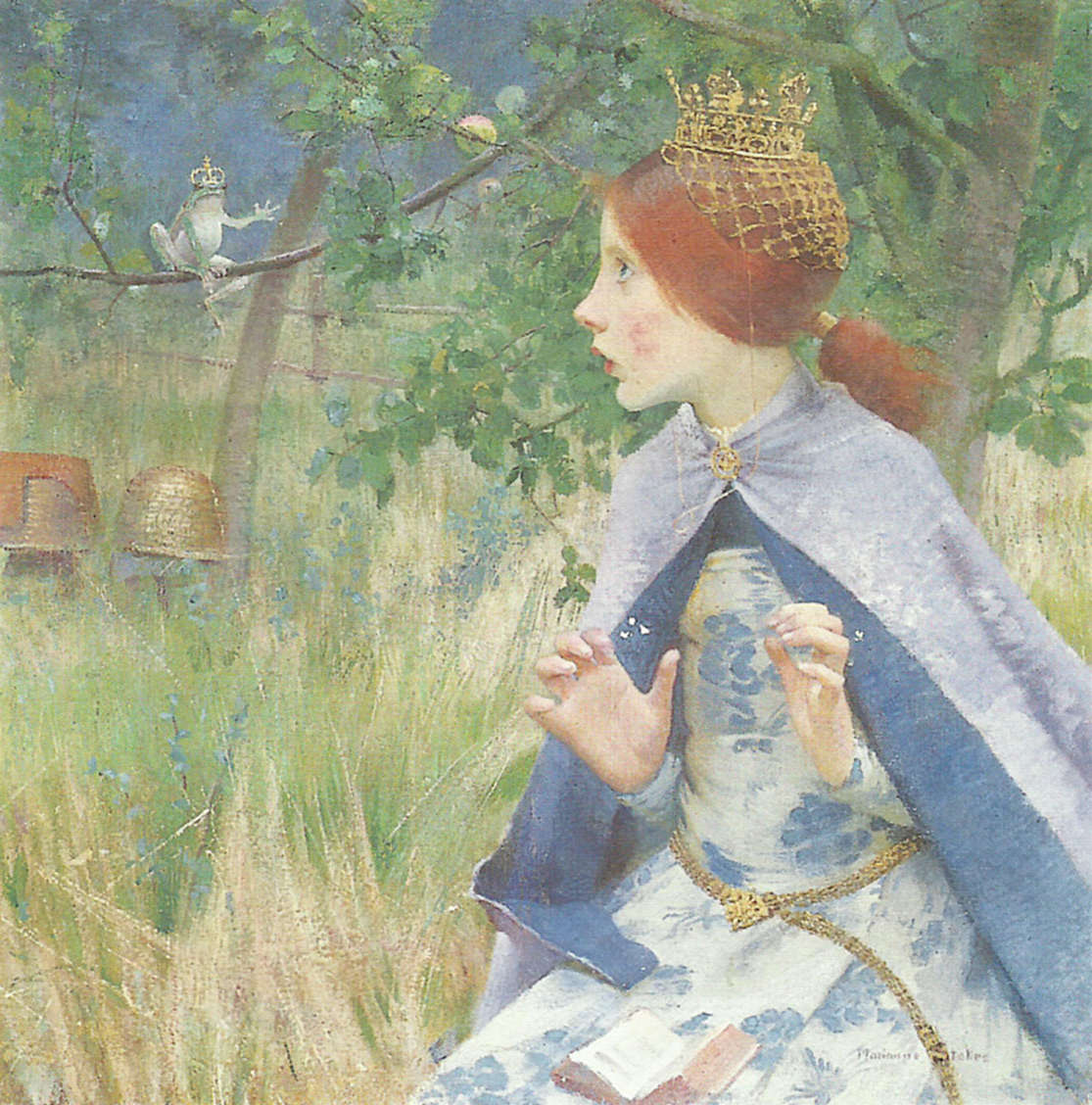
A fine example of this transition is the scene from The Frog Prince, a signature fairy tale from the romantic era, painted in a rural naturalism style.
She stayed faithful to fairy tales by the Grimm Brothers later, as shown in the paintings of Snow White and Brother and Sister below.

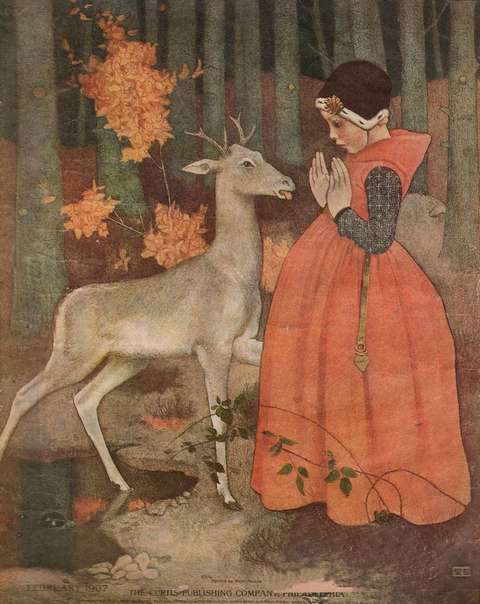
In Paris, she became friends with Finnish painter Helene Schjerfbeck (1862-1946). Both visited Pont-Aven in Brittany, France, where Marianne met Adrian Scott Stokes (1854-1935) whom she married in 1884 and adopted his surname. Soon she started signing as Mrs. Adrian Stokes although her signature on paintings changed to Marianne Stokes and a few years later changed it to initials MS in a decoratively bordered rectangle making a monogram (which was influenced by Pre-Raphaelites).
They married in 1884, in her birthplace Graz, Austria, and honeymooned for several months in Capri, Italy. This was just the start of their mutual traveling and painting. The next two summers, for instance, were enjoyed in the artist colony at Skagen, Denmark, where Stokes befriended Anna Kirstine (1859-1935) and Michael Peter Ancher (1849-1927), major contributors to Danish Impressionism.
It's interesting to note that Marianne didn't create so much as usual because she was spending a lot of time - as a model for Michael's painting A Baptism, where he depicted a baptism of ... This huge painting with dimensions 250 cm x 186 cm took more than five years to be finished and is today on view in Ribe Kunstmuseum in Denmark.
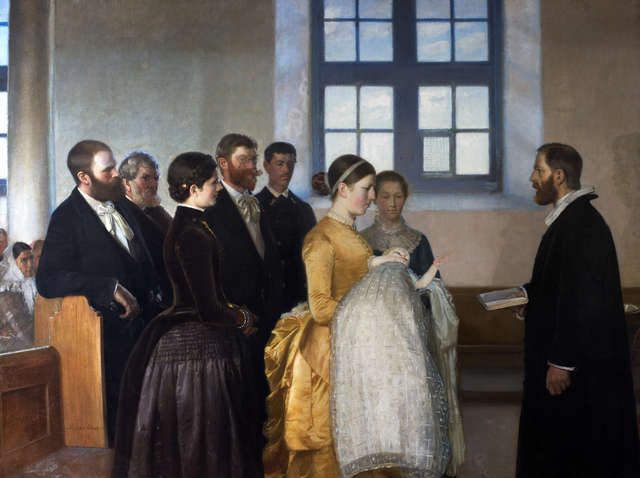
In 1887, Marianne and Adrian enrolled in the newly established English Art Club, finding a home in St. Ives, Cornwall, where another colony of artists (she was a member of the so-called Newlyn School) grew up.
They never had kids, so there were many opportunities for further travel. Both loved Italy, Austria, and France, but Hungary became a very special place with visits in 1905, 1907, and 1908, resulting in several mutual exhibitions (he painted landscapes and she portraits), finally culminating in a book published by Adam and Charles Black, London, with worldwide distribution by The Macmillan Company and Oxford Univerity Press.
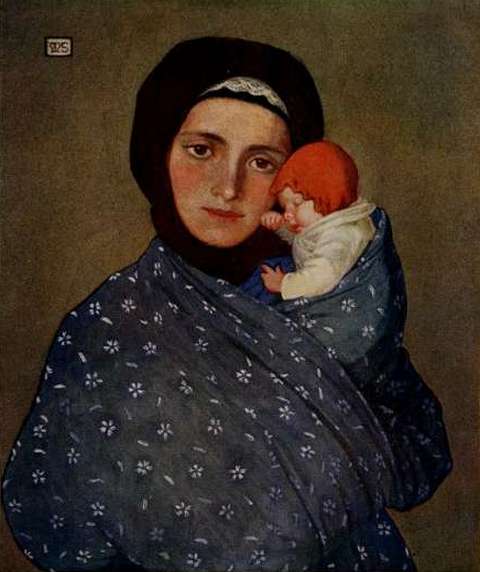
The picture above is just one of 75 (!) paintings, presented by the Stokeses in the book Hungary and a perfect example of probably her favorite theme - mother with a child.
This book is now considered a precious document of times and customs in Hungary when it was a crucial part of the Austro-Hungarian empire just before World War, which eventually led to the collapse of this once powerful multi-ethnical state.
The outbreak of the war caught them in Austria traveling and painting with another artist John Singer Sargent (1856-1925) from the United States of America. Initially, they were rejected at the border so they could not leave the country for some time but then they managed to get in Switzerland.
Marianne Stoke's Style
Marianne was a non-stop learner, always exploring new possibilities in art, constantly absorbing the knowledge and experience of other artists she met on different occasions.
We have already mentioned the influence of Naturalism and Impressionism, but we can't skip the Pre-Raphaelite Brotherhood which also became popular at the end of the 19th century. A fine example of her work from this era is the painting Aucassin & Nicolette from 1898, a scene from a French parody of genres that were popular and overly exploited in the 12th century.

More about this interesting 'sung story' can be read in the article about Aucassin and Nicolette, illustrated by Anne Anderson a decade and a half later.
Marianne Stokes started painting in oil yet gradually moved to tempera and gesso grosso where she achieved more lively colors which didn't become darker during drying. Just like many of her contemporaries, she opted for egg tempera where the oil was replaced with egg yolk making such painting more energetic and colorful without losing lighter shadows over time.
Another influence of Pre-Raphaelites was probably (it was already noticeable before , but from then on emphasized) love for red color. Red dominates virtually all her works after 1890 with Death and the Maiden from 1908 being a great example of playing with red shades and lights.
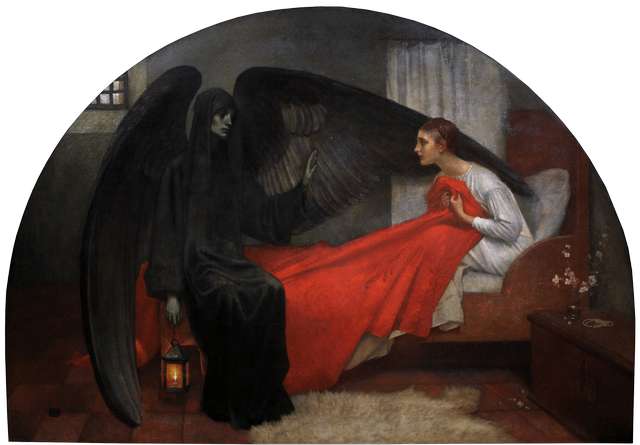
From that era, we should definitely mention her design of tapestry for then hugely popular William Morris & Company (a leading member of the Arts and Crafts movement) which was exhibited in several European art institutions and is now located at Whitworth Art Gallery, Manchester.
As a devoted Catholic, she especially enjoyed painting religious themes like the Hail Mary below and as a member of the Artists' Suffrage League, she also designed banners for the suffrage procession held in 1908.
If we try to pigeonhole her style we can describe it as a s mixture of decorative and symbolistic art under the great influence of Naturalism with a dose of Impressionism.
All these elements can be recognized in the painting below.
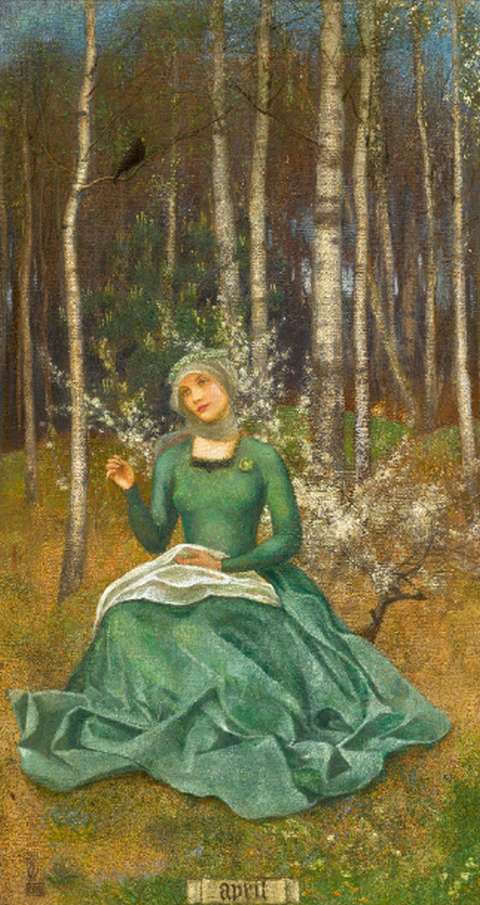
A perfect impression with a hefty amount os symbolis, just right for the decoration of the April calendar, and with typical Pre-Raphaelit signature, right?
Marianne Stokes exhibited all around the world, from Paris Salon, Royal Academy, and National Portrait Gallery, both in London to numerous institutions in Vienna, Graz, Budapest, Pittsburgh, Melbourne, and other prestigious places, winning numerous medals (with gold in Munich and Chicago World Fair) and honorable mentions. In 1905 she was elected to the Society of Painters in Tempera and in 1923 to the Royal Society of Painters in Watercolour. While she was a leading female artist in the Victorian era, today her works are mostly hidden in private collections.